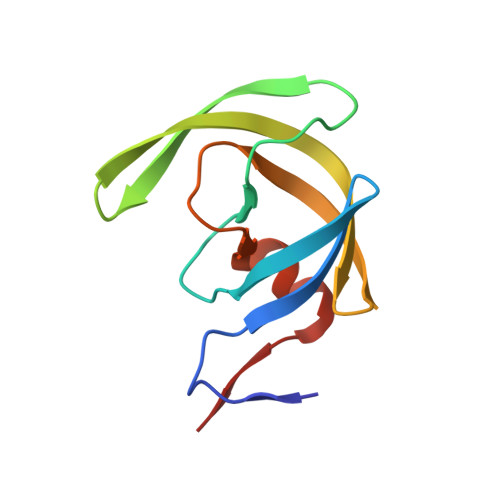Design of HIV-1 protease inhibitors with pyrrolidinones and oxazolidinones as novel P1'-ligands to enhance backbone-binding interactions with protease: synthesis, biological evaluation, and protein-ligand X-ray studies.
Ghosh, A.K., Leshchenko-Yashchuk, S., Anderson, D.D., Baldridge, A., Noetzel, M., Miller, H.B., Tie, Y., Wang, Y.F., Koh, Y., Weber, I.T., Mitsuya, H.(2009) J Med Chem 52: 3902-3914
- PubMed: 19473017
- DOI: https://doi.org/10.1021/jm900303m
- Primary Citation of Related Structures:
3H5B - PubMed Abstract:
Structure-based design, synthesis, and biological evaluation of a series of novel HIV-1 protease inhibitors are described. In an effort to enhance interactions with protease backbone atoms, we have incorporated stereochemically defined methyl-2-pyrrolidinone and methyl oxazolidinone as the P1'-ligands. These ligands are designed to interact with Gly-27' carbonyl and Arg-8 side chain in the S1'-subsite of the HIV protease. We have investigated the potential of these ligands in combination with our previously developed bis-tetrahydrofuran (bis-THF) and cyclopentanyltetrahydrofuran (Cp-THF) as the P2-ligands. Inhibitor 19b with a (R)-aminomethyl-2-pyrrolidinone and a Cp-THF was shown to be the most potent compound. This inhibitor maintained near full potency against multi-PI-resistant clinical HIV-1 variants. A high resolution protein-ligand X-ray crystal structure of 19b-bound HIV-1 protease revealed that the P1'-pyrrolidinone heterocycle and the P2-Cp-ligand are involved in several critical interactions with the backbone atoms in the S1' and S2 subsites of HIV-1 protease.
Organizational Affiliation:
Department of Chemistry, Purdue University, West Lafayette, Indiana 47907, USA. akghosh@purdue.edu






















